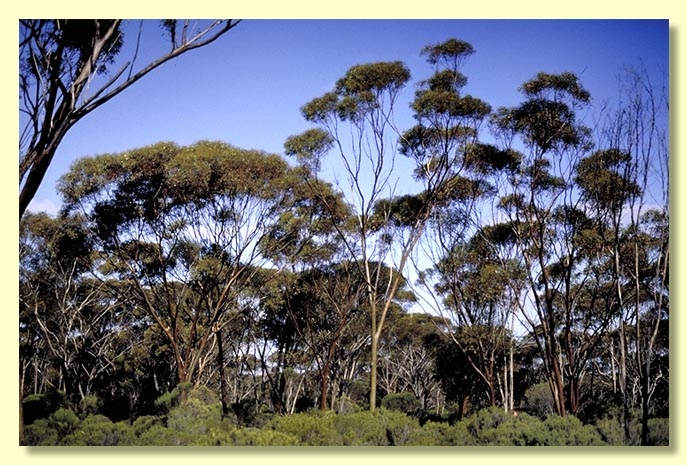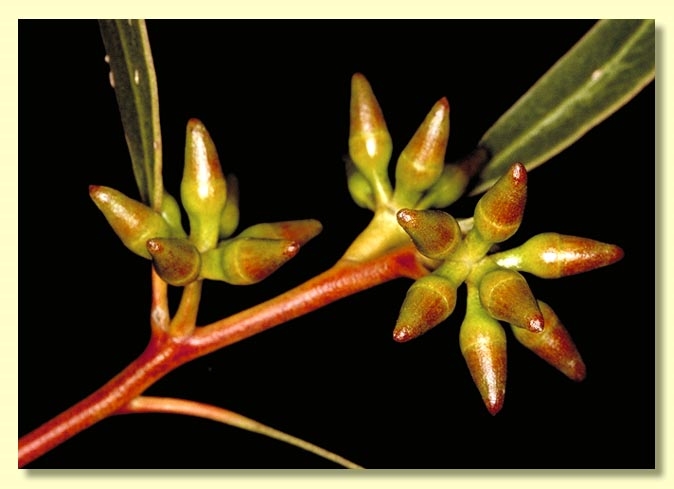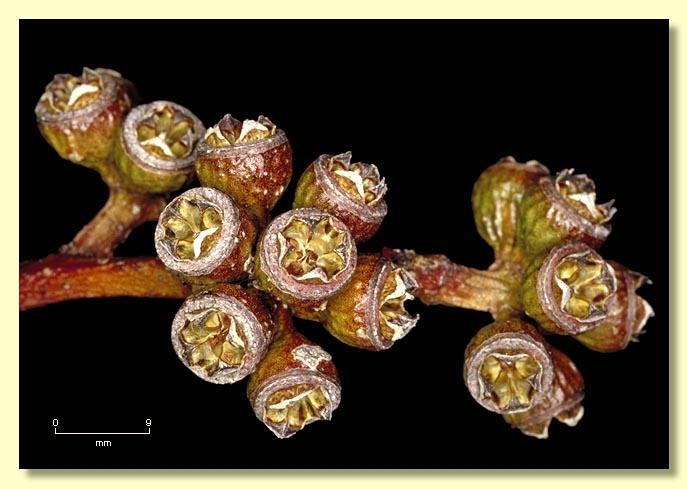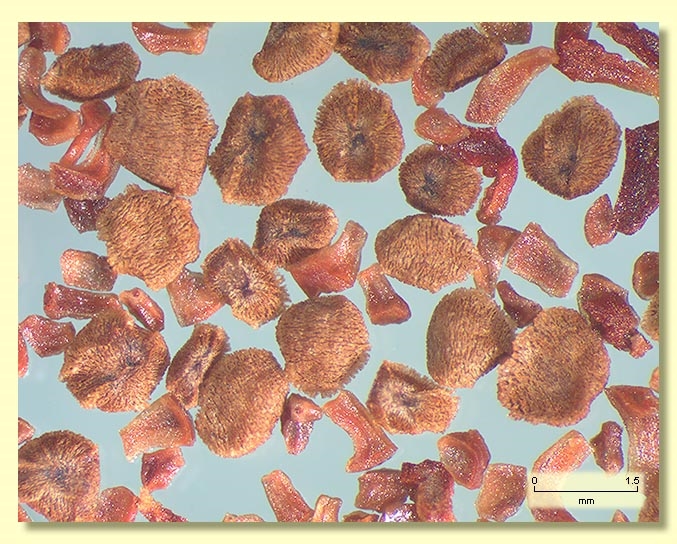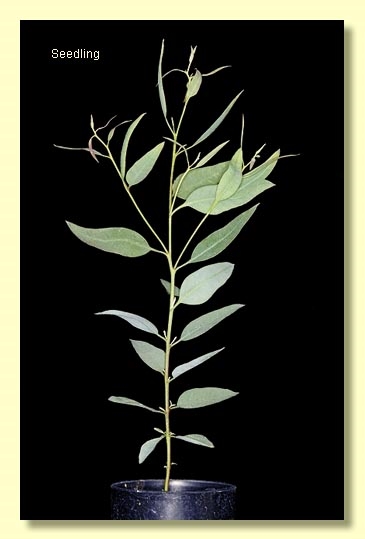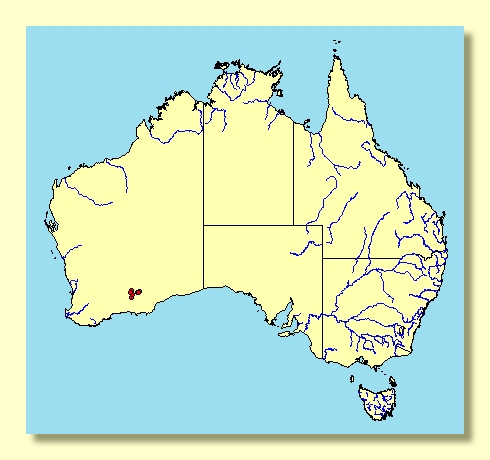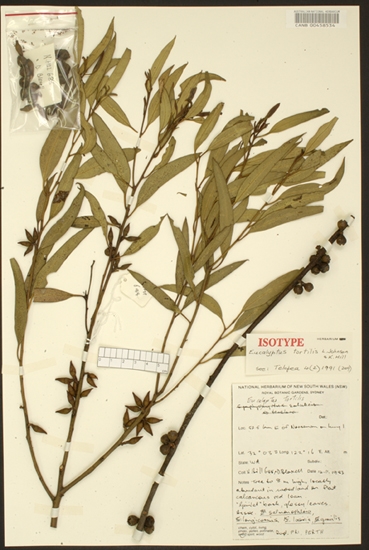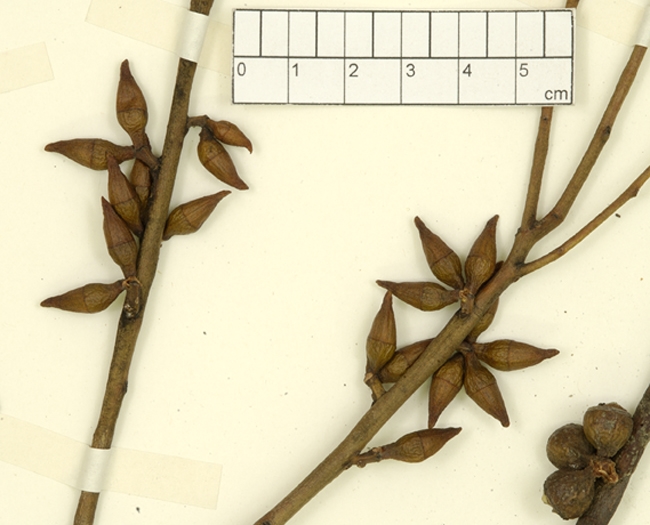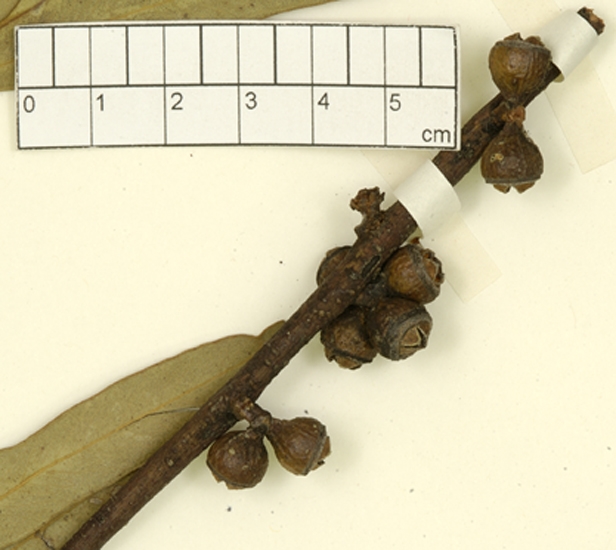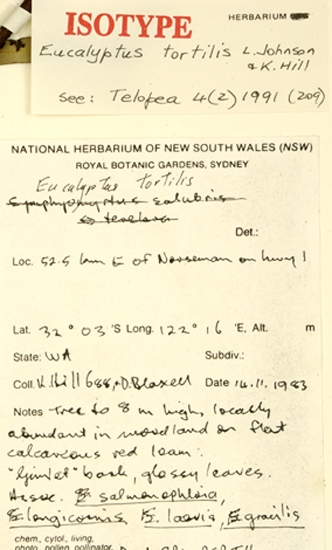Euclid - Online edition
Eucalyptus tortilis
Eucalyptus | Symphyomyrtus | Bisectae | Glandulosae | Contortae
Mallet to 8 m tall, stems fluted. Non-lignotuberous.
Bark smooth throughout, shiny, olive-green to greenish brown or coppery.
Branchlets have oil glands in the pith.
Juvenile growth (coppice or field seedlings to 50 cm): not seen.
Adult leaves alternate, petioles 0.8–1.8 cm long; blade lanceolate, 5.5–9.5 cm long, 0.7–1.8 cm wide, base tapering, margin entire, apex pointed, concolorous, glossy, green, side-veins at an acute or wider angle to midrib, reticulation moderate to dense, intramarginal vein close to margin, oil glands island, very irregular.
Inflorescence axillary unbranched, peduncles to 1 cm long or absent; buds 7, shortly pedicellate to rarely sessile (pedicels 0–0.3 cm long). Mature buds elongated-ovoid (1–1.4 cm long, 0.4–0.6 cm wide), scar present, operculum acutely conical to beaked, stamens inflexed, anthers narrowly oblong, versatile, sub-basifixed, dehiscing by longitudinal slits, style long and straight, stigma blunt to rounded, locules 4, the placentae each with 6 vertical rows of ovules. Flowers white.
Fruit sessile or shortly pedicellate (pedicels 0–0.4 cm long), hemispherical to cupular, 0.5–0.8 cm long, 0.7–0.9 cm wide, disc level to slightly ascending, valves 4, exserted.
Seeds brown to grey-brown, 1–2 mm long, ovoid or flattened-ovoid to polygonal in outline, dorsal surface deeply, closely and narrowly fissured, margin ragged, hilum ventral. (Seedcoat often referred to as being honey-combed.)
Cultivated seedlings (measured at ca node 10): cotyledons Y-shaped (bisected); stems square in cross-section, slightly warty; leaves always petiolate, opposite for ca 4 to 6 nodes then alternate, lanceolate to broadly lanceolate, 6–9.5 cm long, 1.2–3 cm wide, dull, grey-green to green. Lamina on underside, petiole and stem feel slightly warty or rough.
Flowering time unknown.
A small mallet endemic to the Goldfields region of Western Australia, apparently restricted to the area around Norseman extending west towards Bronzite Ridge. The trunk or stems are smooth, greenish to coppery, the adult leaves glossy green and buds are in sevens on flattened peduncles.
Eucalyptus tortilis belongs to a small group, the gimlets (Eucalyptus subgenus Symphyomyrtus section Bisectae series Contortae), notable for the slender fluted, twisted shiny colourful trunks. The gimlets are recognised by the bisected cotyledons, glandular pith, very irregular island oil glands in the leaves, buds with two opercula, and irregularly and deeply fissured seed-coats.
There are six gimlet species with buds in clusters of seven. E. tortilis, unlike both E. ravida and E. campaspe, has non-glaucous branchlets. E. effusa is the only true mallee species of gimlet and has scruffy ribbony bark on the lower stems. E. terebra has sessile, large, crowded buds and fruit (E. tortilis is pedicellate). E. tortilis is most similar to the common and widespread E. salubris only differing from it in having slightly larger buds with more acute opercula and slightly larger fruit. Both species are usually trees with striking shiny 'oily' highly coloured bark and glossy green crowns. E. tortilis may be perhaps better considered a localised form of E. salubris.

